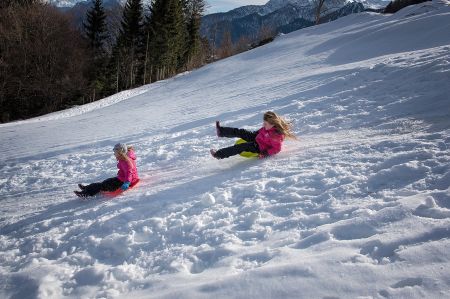Friedrichsroda: professionel bobsledding and sledding privately
- Written by Portal Editor
The first snow is here and soon the first sleds and plastic bobs and bowls can be seen again. Hobby tobogganists and sled drivers can be found on the slopes again with their various companions.
The start of this year's World Cup events is also imminent and again attracts a broad media audience and streams of visitors to the tracks.
Bobs - technical equipment to make the sled controllable
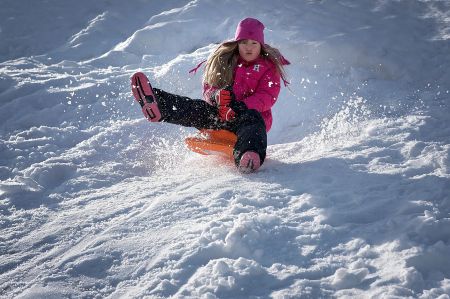 In 1888, when an Englishman installed two sleds in a row under a board in St. Moritz, the sport of bobsleigh was born. The Englishman's concern was actually only to develop a kind of steering system that would make the front sled controllable via a technical device in order to be able to steer the sled better. The first races, which were held on the "natural" toboggan runs like in St. Moritz, were so convincing that the construction was further developed.
In 1888, when an Englishman installed two sleds in a row under a board in St. Moritz, the sport of bobsleigh was born. The Englishman's concern was actually only to develop a kind of steering system that would make the front sled controllable via a technical device in order to be able to steer the sled better. The first races, which were held on the "natural" toboggan runs like in St. Moritz, were so convincing that the construction was further developed.
It is hard to imagine today that bobsledding was a winter sport at the time that was carried out on the forest paths that had been laid out to transport the wood. Today part of the Olympic program at the Winter Games, it is a high-tech sport that is measured in thousandths of a second, the equipment of the participating teams is so extremely similar.
Fast, steerable sleds became high-tech bobsleds
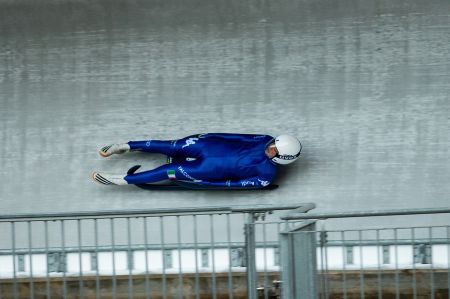 The term "bob" comes from the English verb "to bob", which loosely translated means something like "move with a jerk". And this is what the first moving pictures of bobsleigh looked like. At the beginning of the ride, the athletes tried to offer the airstream as little surface as possible by leaning back, which is basically the right approach. But then the pilots suddenly jumped forward with their upper bodies together in order to give the bobs more momentum and thus increase the speed. Here you can see the origin of the word "bobben" that was created at that time.
The term "bob" comes from the English verb "to bob", which loosely translated means something like "move with a jerk". And this is what the first moving pictures of bobsleigh looked like. At the beginning of the ride, the athletes tried to offer the airstream as little surface as possible by leaning back, which is basically the right approach. But then the pilots suddenly jumped forward with their upper bodies together in order to give the bobs more momentum and thus increase the speed. Here you can see the origin of the word "bobben" that was created at that time.
In 1901, Carl Benzing developed and built the first German steel bobsleigh in Friedrichsroda, Thuringia, which had a cable steering system. Benzing (1869 to 1955) is considered to be the first really "real" bobsleigh in Germany due to the construction of this open five-man bobsleigh, which was affectionately dubbed "Schwarzer Peter". When only a few years later the Spießbergbahn in Friedrichsroda could be completed, the cradle of the German, so extremely successful bobsleigh sport was created. As early as 1901/2 there had been a first bobsleigh race on the Red Trail in Friedrichsroda with at least ten bobsleighs taking part. A few years later, in 1911, the Bobsleigh and Sled Association of Germany was founded.
The bobs hardly have anything in common with the former sled construction
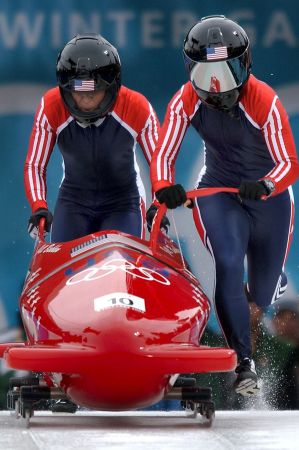 After the First World War, precisely since 1923, bobsleigh sport was practiced on an international level for the first time within the framework of the Fédération Internationale de Bobsleigh et de Tobogganing (FIBT) and since 1924 there have been competitions at the Winter Olympic Games as well as world championships. At the beginning there were still five pilots per bobsled, as in the 1924 and 1928 games. Today the classes are divided into two groups for men and women and are limited to two and four pilots respectively. The bobs actually have hardly anything to do with the former sled construction, only the front runners can be steered via a cable pull. Otherwise, the entire construction and technology comes from the wind tunnel, so aerodynamic are full fairing and technology.
After the First World War, precisely since 1923, bobsleigh sport was practiced on an international level for the first time within the framework of the Fédération Internationale de Bobsleigh et de Tobogganing (FIBT) and since 1924 there have been competitions at the Winter Olympic Games as well as world championships. At the beginning there were still five pilots per bobsled, as in the 1924 and 1928 games. Today the classes are divided into two groups for men and women and are limited to two and four pilots respectively. The bobs actually have hardly anything to do with the former sled construction, only the front runners can be steered via a cable pull. Otherwise, the entire construction and technology comes from the wind tunnel, so aerodynamic are full fairing and technology.
The two existing classes for men and women stipulate a minimum empty weight of 170 kilograms for two-man bobs and 210 kilograms for four-man bobs. The regulations are still determined by the International Bobsleigh Federation (FIBT). The maximum weight is also determined according to equal treatment. In the two-man bobsleigh for women it is 340 kilograms, for men 390 kilograms. If a team is lighter, ballast is used to compensate accordingly. In the four-man bobsleigh, which does not exist for women's competitions, the maximum weight is 630 kilograms.
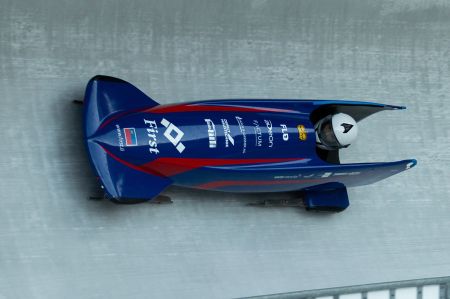 Due to the various attempts to manipulate the runners, the FIBT regulated the runner width to 14 mm for all participants in 2006 and at the same time limited the runners to be used in all competitions to one manufacturer, which the FIBT itself determines and thus sells the runners itself . This means that only one type of stainless steel is used and the manipulations have come to an end. Today, the runners with their slightly curved longitudinal profile can still be machined, but the material structure is the same for all of them. The track width, which is always clearly visible at the start of television broadcasts in particular, is 67 centimetres. All components are today, comparable to Formula 1, largely specified. This applies to the suspension, the axles and their spacing, the joints, the angle of rotation and the rake brakes. All this has become necessary because the designs of the bobs only allow minimal differences in speed, so it really depends on the class of the pilots in terms of driving technique and strength.
Due to the various attempts to manipulate the runners, the FIBT regulated the runner width to 14 mm for all participants in 2006 and at the same time limited the runners to be used in all competitions to one manufacturer, which the FIBT itself determines and thus sells the runners itself . This means that only one type of stainless steel is used and the manipulations have come to an end. Today, the runners with their slightly curved longitudinal profile can still be machined, but the material structure is the same for all of them. The track width, which is always clearly visible at the start of television broadcasts in particular, is 67 centimetres. All components are today, comparable to Formula 1, largely specified. This applies to the suspension, the axles and their spacing, the joints, the angle of rotation and the rake brakes. All this has become necessary because the designs of the bobs only allow minimal differences in speed, so it really depends on the class of the pilots in terms of driving technique and strength.
Further bob curses were built in Winterberg and Altenberg
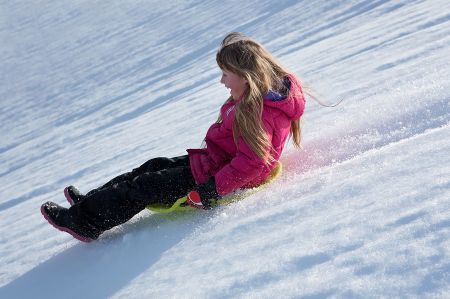 Comparable to other sports, the bob pilots were hardly protected against accidents in the early days. It was only after a few accidents on the natural slopes, which were only bordered by high banks of snow to the right and left of the route, that people began to think about the safety of pilots and spectators. Pictures of the first races show the potential danger very clearly, spectators directly on the slope and hardly any excessive bends caused broken bones and other injuries. With the increase in spectator numbers, people began to think about carefully planned natural ice rinks. Now artificial gangs have been set up and curves carefully developed. This was followed by the construction of completely artificial rinks, which inevitably reduced the number of natural ice rinks again.
Comparable to other sports, the bob pilots were hardly protected against accidents in the early days. It was only after a few accidents on the natural slopes, which were only bordered by high banks of snow to the right and left of the route, that people began to think about the safety of pilots and spectators. Pictures of the first races show the potential danger very clearly, spectators directly on the slope and hardly any excessive bends caused broken bones and other injuries. With the increase in spectator numbers, people began to think about carefully planned natural ice rinks. Now artificial gangs have been set up and curves carefully developed. This was followed by the construction of completely artificial rinks, which inevitably reduced the number of natural ice rinks again.
The first artificial ice rink in Germany was built in what is now the Mecca of bobsleigh pilots in Königssee. Other tracks were built in Winterberg and Altenberg, a track that experts still regard as the most difficult bob track in the world. Today, all tracks on which bobsleigh races are held as part of the Olympic Games are built in the form of concrete channels, which are then provided with artificial ice. The only exception is the track in St. Moritz, which is still used as a natural ice rink for World Cup races.
Please read as well:
